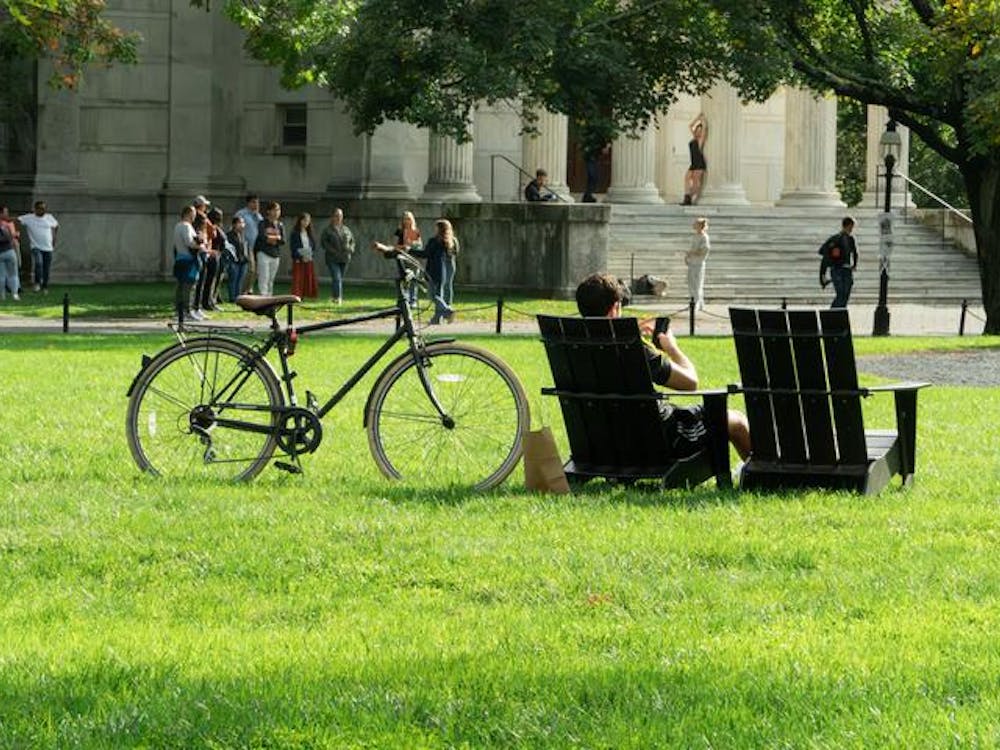In his recent column, “Run Dining Halls like a Business,” fellow opinion columnist Newby Parton argues that University meal plans are a “horrible and scandalous” deal that would “bankrupt a real restaurant in a week.” His strong assessment leads him to a simple conclusion: “Find the waste. Slash it. Give dining hall incentives to cut costs. Let students opt out of the meal plan after the first semester, but offer them a reasonable price so they will want to stay. Bring in restaurateurs to help.”
Initially after reading Parton’s article, I agreed wholeheartedly with his argument. The $17.53 a meal figure did indeed appear shockingly high, especially in comparison to a meal at Yale, which averages $11.17. But after examining his methodologies, his assessment seems questionable. Therefore, in this piece I aim to first discuss Parton’s article regarding the present state of the dining halls and then move on to talk about their potential future.
Parton bases his entire argument on a figure he calculated using the Block 95 meal plan, which costs $3,330 per year. It is the smallest plan the University offers and is only available to juniors, seniors and graduate students. Parton explains in the comments section of his article that he chose the Block 95 plan “because this is a lot of meals — we would still expect economies of scale to come into play here — and its limits allow for calculating a definite number.” To give a fairer estimate, however, he should have done the math with other plans or taken an average. The Block 95 plan is designed for less frequent users who want flexibility. Parton himself can’t even get onto this plan as a freshman because it is only offered to upperclassmen. Since this is a plan for a targeted group, its individual meal costs do not reflect the actual sum paid by an average student. It is actually the most expensive plan per meal available. It would have been better journalistic practice had Parton included figures from other Block plans and the Unlimited plan, especially given that they can tell another story. Each meal costs $14.63 on the Block 190. The cost goes down to $12.36 on the Block 235.
The Unlimited is a whole new question. Parton originally claimed in the comments section that an unlimited plan would come out to be around $12 a meal if we assume that a student eats three meals a day for 24 academic weeks. Since then, he has admitted that he had neglected to include reading and exam periods. Each semester, reading period takes up eight days and exam period ten days. This is 36 extra days, or approximately five extra weeks. Then there are break meal plans for fall, Intersession and spring breaks, when students on the Unlimited can have two meals a day. Each of these breaks is nine days. And then there are ten guest swipes. So if a student on the Unlimited eats three meals a weekday, two on the weekends, he would eat about 615 meals in a year at a cost of only $9.84, which is lower than the average meal cost at Yale’s figure according to Parton. Additionally, I did not include late meal for the sake of simplicity. With late meal, the price is significantly lower.
(Aside: Parton’s Yale figure is calculated using guest meals, not student plans. Yale’s Unlimited meal plan, which is comparable to what our plan offers, is $6340 a year, $290 more expensive than our own Unlimited).
Parton’s figures, which come from the Block 95, lead to exaggerations throughout the article. He uses the cost of an individual meal on the Block 95 as the cost of late meal. For instance, he writes, “I asked why a $17.53 swipe at Late Meal buys less than $7 of food. She could not comment at that time, either.” The $17.53 does not accurately reflect the cost of a late meal, but rather a meal on the Block 95 plan.
The amount he had to pay for food at Hunan is about$9.84. However, at Hunan, he would have needed to pay more had he decided he wanted spring rolls, soup or even a bottle of water. At the dining hall, he can stuff himself from soup to dessert at no additional cost.
The point is moot. The two systems are so different that they are not comparable anyway. A dining hall may not need to worry about making profit or rent, but it needs to worry about providing an incredible amount of diversity. It needs kosher, vegetarian, vegan options, skim milk, 2% milk: you get the idea. And it needs large quantities of each.
As shown, the average price of a dining hall meal vastly differs depending on the assumptions made in the calculations. Although I disagree with Parton’s assessment, it does not mean the dining hall is flawless.
First, I agree wholeheartedly with Parton that students should not be forced to go onto a meal plan at Princeton. While I do not believe that going to Nassau Street for meals would be cheaper, I am against the idea of students being forced to purchase food from the University.
The biggest problem I see, though, is the price tag difference between the Unlimited and Block plans. The Unlimited plan offers an incredible amount of meals, but it is almost too comprehensive to fit the eating habits of most students. Very rarely will students eat all three meals a day and two late meals and stay on campus for all of reading period, exam periodand the breaks. This is the reason we have the Block plans. However, as it stands, the University strongly encourages students to purchase the Unlimited. The Block 190, for example, is only $490 less expensive than the Unlimited a year, even though it comes with so few benefits compared to the Unlimited.
For me, I knew before coming to Princeton that I was not a big eater. The $490 difference was enough to motivate me to go on the Block 190. But given the sad fact that $490 is nothing in the grand spectrum of extravagant spending that is our college education, this difference is not enough to motivate students to go on smaller meal plans. The result is that students are enrolled in the Unlimited even when their eating habits are better fit for a smaller plan.

The dining hall has no reason to charge a student more per meal because they are on a smaller meal plan. It needs to prepare the same amount of food anyway and should not be affected by these kinds of economies of scale. Parton was right in pointing out that each meal on the Block 95 is too expensive. If a meal on each of the Block plans also costs $9.84, more students will find a stronger financial incentive to enroll in a plan that is the most appropriate for them.
Princeton should also enable the Block plan meal swipes to carry over into the breaks. Because of skipped meals, ramen and too manydollars spent on Nassau Street, I had a lot of meal swipes left by the end of the semester even though I am on the Block 190. I could have easily used them for fall break, when I decided to stay on campus. Instead, I was forced to go on a break meal plan for $180. If I had wanted to stay for Intersession and spring breaks, my meal plan would have cost more than the Unlimited, which does not sound right. Providing the option of purchasing additional meals and the option of allowing students to use their regular meal swipes would further incentivize students to find the meal plan that is most appropriate for them. It would also prevent students from going home when they want to stay on campus because they are worried about money.
The dining hall system is not the inefficient, scandalous mess that Parton makes it out to be. But it is also not perfect. The students and the administration can work together toward accomplishing a more efficient dining hall system.
Erica Choi is a freshman from Bronxville, N.Y. She can be reached at gc6@princeton.edu.








